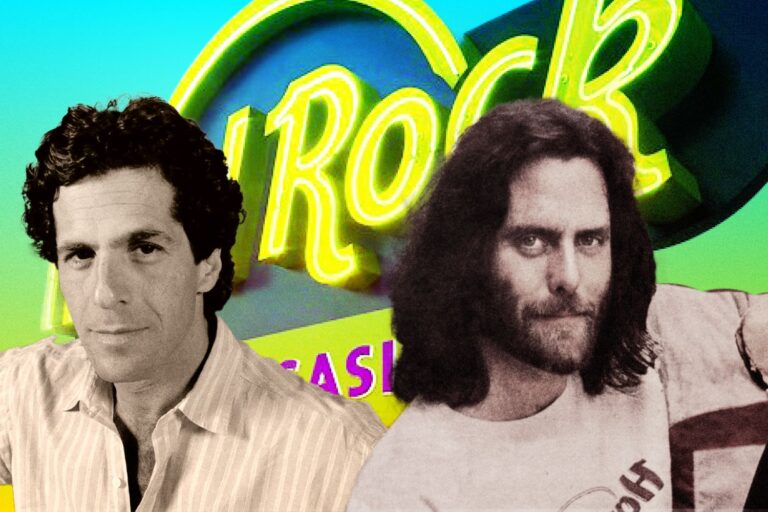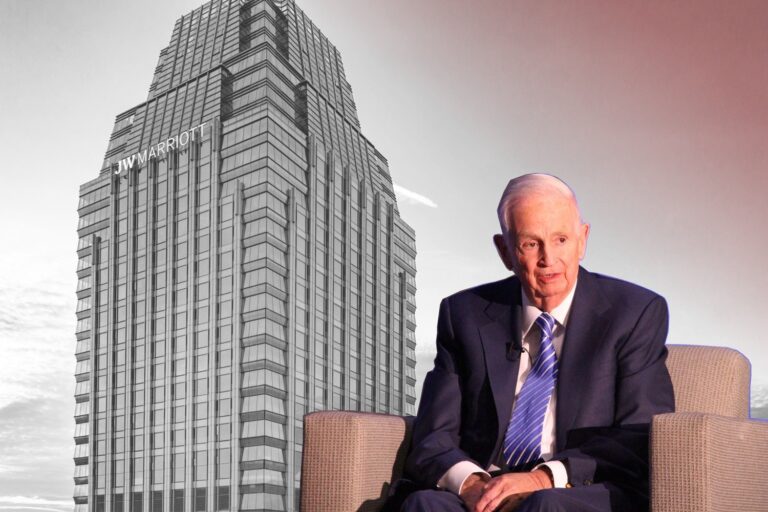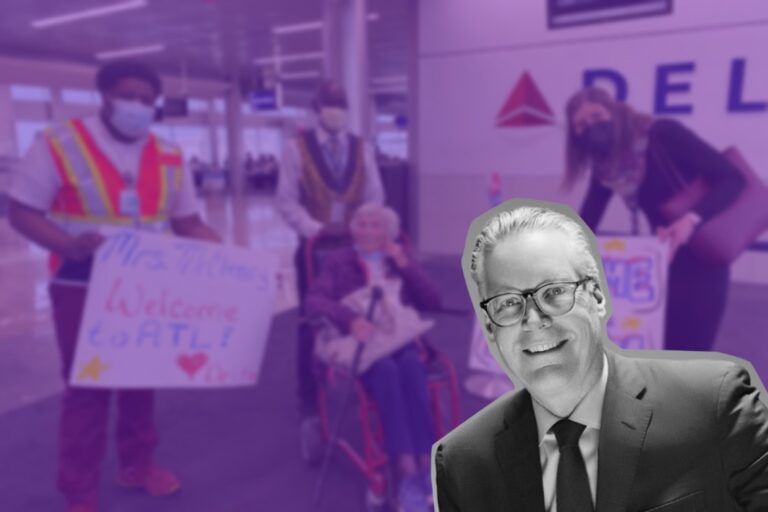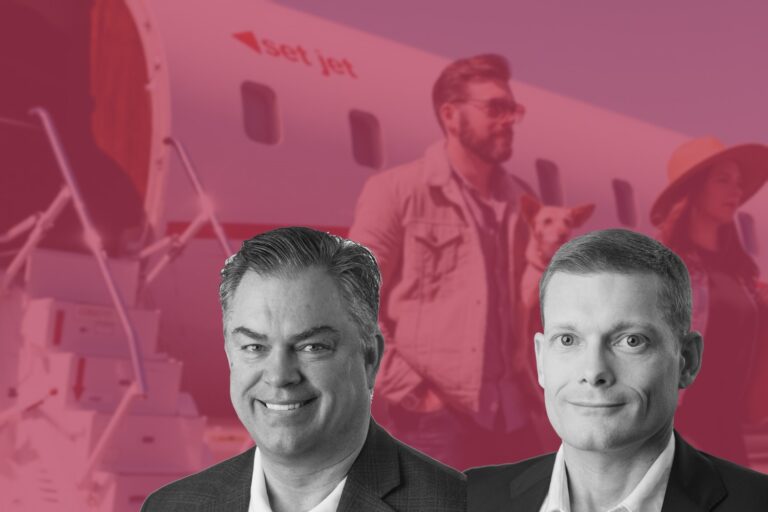The Giant United Airlines in The Endless Loop of Rise and Fall
United Airlines is an American international airline serving North America, Asia, Latin America, the Caribbean, and Europe. Headquarters for the air carrier’s parent company, United Continental Holdings, are in Chicago.
United Airlines dates to 1929, when William E. Boeing, Frederick B. Rentschler, and their associates founded United Aircraft Transport Corporation, a chain of both aircraft manufacturing and air transport. By 1930 it had acquired four mail carriers—Boeing Air Transport, Pacific Air Transport, Varney Air Lines and National Air Transport and in 1931 established United Airlines, in Chicago as a holding company providing an umbrella management for the four operating divisions.
In the early 21st century, because of increasing financial difficulties in a struggling airline industry, United underwent a period of major restructuring, which included a decrease in flight routes, a reduction in seating capacity, and employee layoffs and job cuts. In 2004 United launched its low-fare carrier Ted Airlines, which it discontinued in 2009, and in 2007 it acquired an equity stake in Aloha Airlines. The following year United partnered with Continental Airlines to expand its flight options, and in 2010 it merged with Continental. However, the two airlines continued to operate separately—as subsidiaries of the newly created United Continental Holdings—while waiting for the Federal Aviation Administration to issue a single operating license, which was granted in late 2011. In March 2012 Continental’s operations were rebranded under the United name.
United Airlines Story: Insights of The Epic Fall and Its Poor Service

On September 11th, 2001, a United 767 flown into the South Tower of World Trade Center New York. The attacks saw a rapid decline in air travel leading to losses for airlines globally, including United Airlines. After it was unable to secure funding following a $2.14B loss in 2001 due to the attacks, United filed for Chapter 11 bankruptcy protection. Thousands of employees were furloughed while less profitable and planned routes were cut. United also reduces their fleet from 557 to 460 aircrafts. However, it did manage to come back from the downturn and thrive into a large corporate as today.
Unlike United Airlines, many others didn’t survive the fall and ended up being combined into other airlines. After that, instead of a bunch of small company we have a few large ones. Today by third-two of the market is controlled by the four companies and United Airline is one of those. The merger has decreased competition and that is the basic reason behind its poor service.
The ACSI they survey customers to put together this ranking of how satisfy they are with different company- the American Customer Satisfaction Index. Along with many scandalous brutal service stories over the years United Airlines has not performed well, they are even ranked at the very bottom but consistently for over twenty years now, they have always scored lower than the benchmark of the industry. Meaning that, United customers are genuinely not happy with it.
The 2020 Epidemic Death Sentence, Will It Survive and By How?
The U.S. bankruptcy process permits companies to reorganize and drop their most onerous debts and labor contracts without materially changing their models. In some other countries, including in Europe, an airline that can’t pay its debts often goes out of business, forever.
United capitalized on U.S. bankruptcy law in 2002, reorganizing ahead of its merger with Continental Airlines, but current CEO Scott Kirby told analysts he has no interest in filing again, bankruptcy could allow United to get out of aircraft leases and labor contracts. But Kirby said it is not worth the costs. So, what is it planning to strive out of this difficulty?
Cut Back to Survive the Extreme
United Airlines said in a filing that its scheduled flight capacity in the third quarter would be down 70% year over year, compared with the 65% decrease that it previously forecast. The airline expects passenger revenue to be down 85%, compared with previous guidance of an 83% decline.
Therefore, it is in need to shrink its labor costs by as much as 50% to survive — and even then it’s possible the carriers don’t make it through the crisis, United Airlines former Executive Chairman Oscar Munoz told CNN Business. “The stark reality of what we’re facing is dire” Munoz said in an exclusive interview. Munoz estimates the collapse of air travel during the pandemic will force airlines to slash their payroll costs by a staggering 30% to 50%. That translates to tens of thousands of lost jobs.
What to Do with Almost 96,000 Employees?

In July, United Airlines warned that 36,000 employees, or nearly half of its frontline workforce, could be furloughed this fall. “The pandemic has drawn us in deeper and lasted longer than almost any expert predicted, and in an environment where travel demand is so depressed, United cannot continue with staffing levels that significantly exceed the schedule we fly,” a letter to United employees said.
Prior to the pandemic, the airline industry was booming — and spending more on its workforce. Wages and benefits for the nine publicly traded airlines in the United States stood at $50.9 billion in 2019, up nearly 6% from the year before.
Passenger airlines employed nearly 500,000 people in February before the pandemic erupted, according to the Bureau of Transportation Studies.
The Coronavirus Aid, Relief, and Economic Security (CARES) Act, which provided a $50 billion bailout designed to keep US airlines afloat, requires carriers to avoid making involuntary job cuts until October 1. But thousands of workers have already taken buyouts, early retirements or unpaid furloughs.
Munoz praised the thousands of workers who have accepted voluntary cuts so that colleagues who are “more in need” don’t face financial hardship.
What Efforts Are Made to Hold Back Customer and Keep the Business on Run?
As much as others, traveling and airlines business damaged greatly when the pandemic strikes. As a global giant United Airlines is on the edge of the downturn and it is seeking all possible ways to turn this table. Let’s take a closer look on many of its moves!
Covid-Free Cabins and The New Designed Robot

United Airlines is turning to a 100-pound robot in its latest effort to reassure customers that flying during the COVID-19 pandemic is safe.
The carrier announced that it would be coating the surfaces of its aircraft with an EPA-registered antimicrobial coating, to be applied in a “super fine mist” by a robotic device called a “NovaRover”. “This long-lasting, antimicrobial spray adds an extra level of protection on our aircraft to help better protect our employees and customers,” said Toby Enqvist, United’s chief customer officer. The coating will be applied by the NovaRovers after deep cleanings, and then weekly thereafter with electrostatic sprayers. Electrostatic disinfectant will continue to be applied “before almost every departure”. That is quite an extra level of protection which we haven’t seen from elsewhere amongst these carriers, but what other efforts to seek from United Airlines?
First U.S Carrier to Available Covid-19 Test

United Airlines became the first U.S. airline to launch a COVID-19 pilot testing program for travelers that could make it easier for them to manage quarantine requirements and entry conditions of popular destinations around the world. Starting on October 15, customers traveling on United from San Francisco International Airport (SFO) to Hawaii will have the option to take a rapid test at the airport or a self-collected, mail-in test ahead of their trip.
The rapid test provides results in approximately 15 minutes and will be available to United customers on the same day as their flight departing from SFO. The mail-in test option is recommended that customers initiate testing at least 10 days prior to their trip and provide their sample within 72 hours of their trip. “Our new COVID testing program is another way we are helping customers meet their destinations’ entry requirements, safely and conveniently,” said Toby Enqvist, Chief Customer Officer at United.
Free Ticket Change – A Risky Bet to Hold Back Customers
As airlines brace for potential mass layoffs and involuntary furloughs, United Airlines has made a move it hopes will retain customers at a time when air travel has plummeted.
United CEO Scott Kirby said that the airline will be permanently waiving its change fees on all travel within the United States for all but its cheapest flights. This move will sure put pressure on its rivals- American Airlines and Delta Air Lines to drop their change fees, also $200 on domestic travel.

Besides, the airline had already suspended the standard $200 fee charged to passengers looking to change their flights during the pandemic. The announcement comes after United has said it may furlough almost 3,000 pilots, the most in its history. Passenger levels have dropped nearly 80%, and business travel has nose-dived 90% since the pandemic began.
In addition to the elimination of the changing fees, passengers will also be allowed to standby for earlier and later flights without paying fees, starting in January. “We’re making the bet, and I think it’s the right one, that doing the right thing for customers in the long term is going to pay off” Kirby said. However, United said as it eliminated change fees for people who buy a standard or premium economy ticket for U.S. travel, there will be no changes in luggage fees because United says the cost of transporting luggage is too high to eliminate the fees.
The Bottom Lines
Many strong moves have been made from cutting cost to waiving fee, the company is doing its best to avoid the relapse of its bankruptcy history. This is not the first time United Airlines facing such epic downturn, it has repeatedly fall and rise many times and still manage to be one of the top-tiers in the industry. And it is believed to carry on thriving once the vaccine is out.









